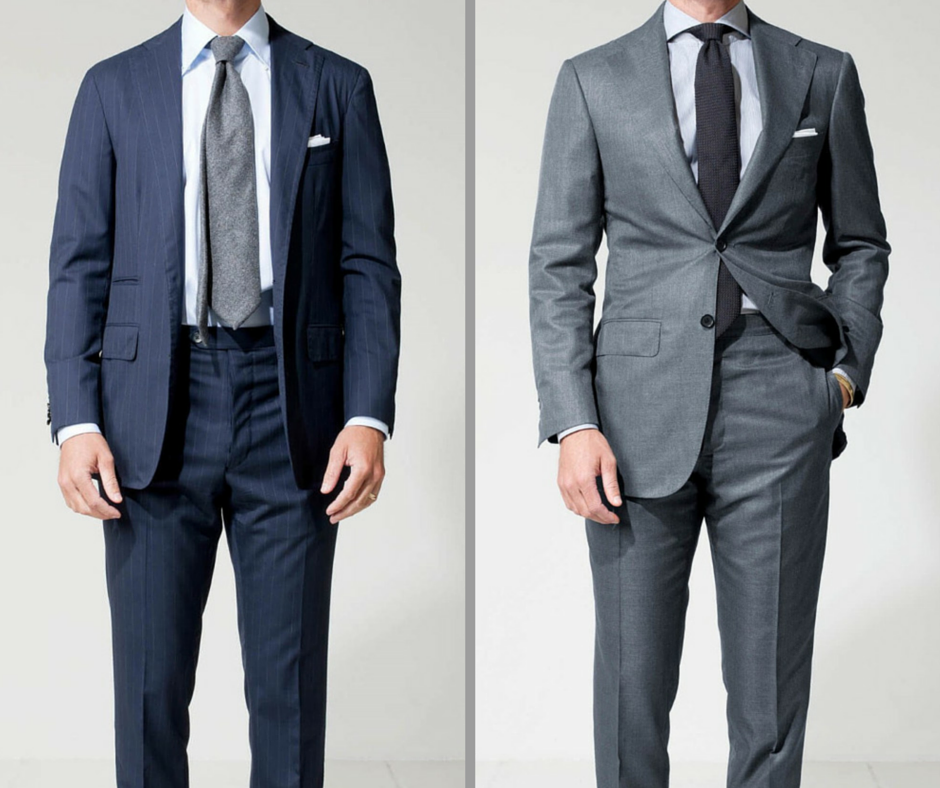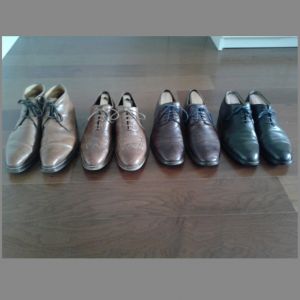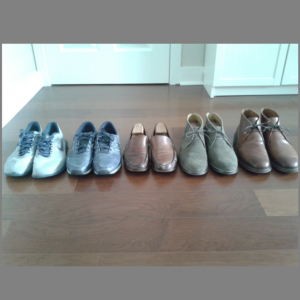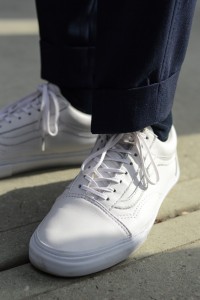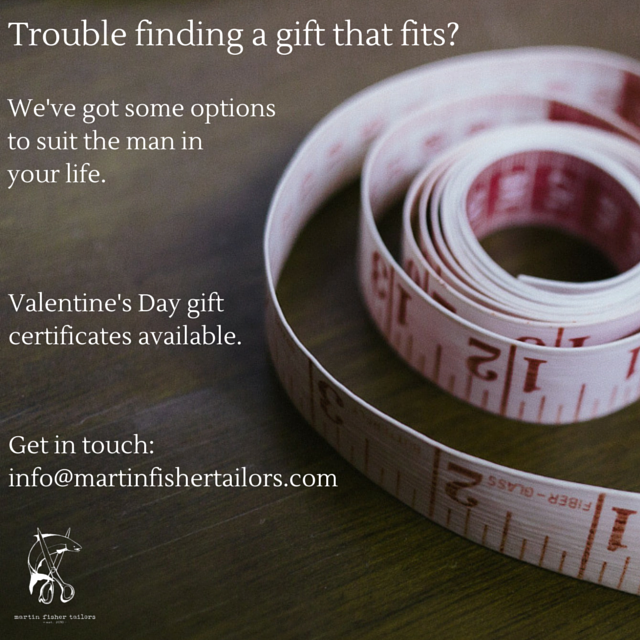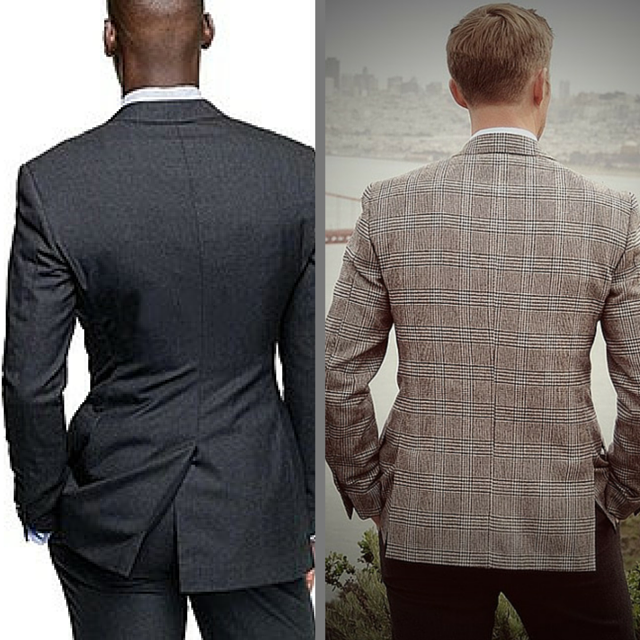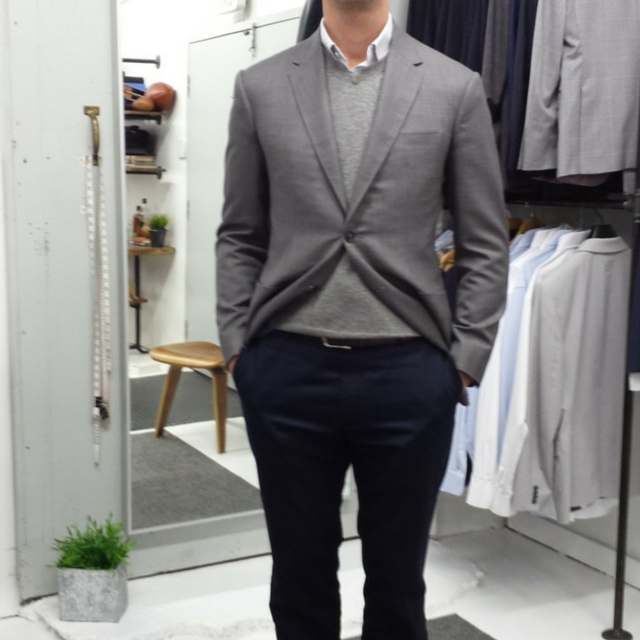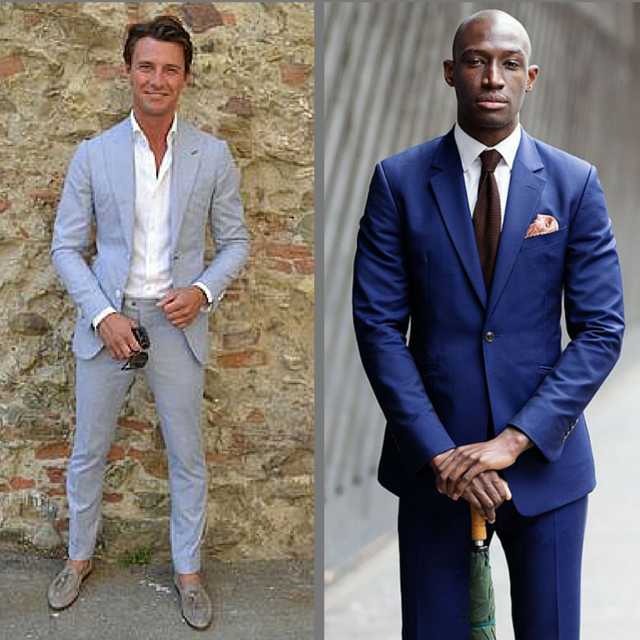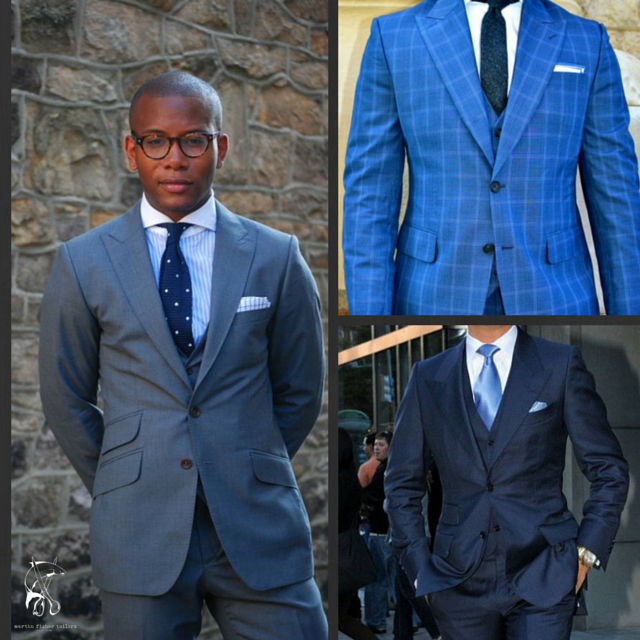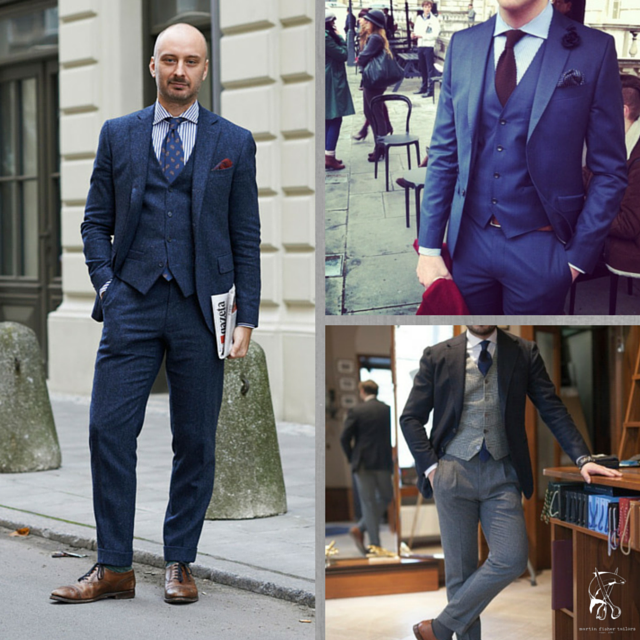Advice For Buying Off The Rack
The key is to know which aspects of a suit you need to get right from the outset and which areas you can tweak via the alterations route. The idea that alterations can fix all flaws is in itself a flawed way of thinking. Here are a couple of things to keep in mind:
Get the shoulders right
Both in terms of the width as well as the length over the top of the shoulder. The width is easy – as you can see in the image below the shoulder seam needs to be sitting in the vicinity of your shoulder bone. It can be slightly inside for a narrower appearance or slightly outside to give you a wider appearance – this visual manipulation is up to your eye and is based on personal preference.
The length over the top is not discussed as often but is critical to understand for fit. Imagine you’re squeezing a ruler under your armpit – the distance up and over the shoulder from one point to the other is the length we’re talking about. Too tight and the lapels will buckle; too loose and you’ll be swimming in the jacket. Your eye will see the difference but more importantly you will feel it – we’re looking for your body and the jacket move together in unison. No pulling, restriction or downward pressure on your shoulders/chest area; but equally no floating effect where the jacket moves independently of you.
Of the two – width can be altered. That said it’s not cheap – removing and reattaching the sleeve is time consuming and getting it done right is crucial as the shoulders expression is so key to a jackets appearance. If the rest of the jacket is dead on then consider it – if not walk away. As for the length over the top – it’s not alterable so you got to get that right.
Get the front close
Be wary of the jacket that is “almost right” but has a lot of excess on the front in relation to the back. This typically happens to guys who have a bigger back in relation to their chest. The overall circumference of the jacket is right for their size but it’s the location of the fullness that is off. Sales folk will often tell you that it can be taken in at the back seams to create a cleaner silhouette – sometimes this is the case but don’t always believe them. No doubt the number one alteration error I see around town is the aggressively taken in back to compensate for fullness on the front. All too often the result is a front that is still too big but now with a back that is clearly too tight.
Why is this?
It’s because the front of the jacket is pretty much set – the front is unalterable due to the buttonholes while the front seams can’t be changed due to the pockets. What can be altered on the front though is the chest – we can take out up to ¾” per side without throwing off the fit of the sleeve. So be careful – if you do have some excess in the back then you can “pull around” the front by removing that excess. If the pulling around technique gets the front close enough for you to be happy with then go for it – if not then simply walk away.
Be wary of length
There are two versions of this – one can be saved while the other cannot. I’ll start with the save – this occurs when the jacket fits properly but the style is simply longer than you desire. By this I mean the shoulder and chest fit, the button stance is in the right location as are the lower pockets. In this case it’s relatively easy to remove length from the bottom of the coat – the only factor to keep in mind is the balance of the coat thus don’t overdo it and remove too much length. This is a common alteration as a shorter jacket is the fashionable look these days.
In terms of the non-save – this occurs when the jacket is too long in the body for your height. By this I mean the button stance and lower pockets are sitting too low. In this case the length needs to be removed from the mid-point of the jacket which is obviously not possible. I’m afraid simply lopping it off from the bottom will not solve the problem.
Get the rise right
The rise in a pair of pants is crucial – it dictates the look and feel of the pant but more importantly it’s crucial for comfort as well. Certain body types require specific rises – be it due to your height or your physique. If the rise and resulting fit isn’t right then walk away and find a different style of pant as it’s unalterable. Check back next week for a full breakdown on all things pants.
Be specific
If you’re able to avoid and/or navigate some of the situations discussed above then you’re in the position to make a purchase. At this stage you can get as specific as you want – how specific of course depends on the amount you’re willing to spend on alterations to get things perfect. Here are the key finishing alterations:
Square shoulders – OTR jackets are cut to accommodate as many body types as possible but where they will miss is if your shoulders are too square. In this case you’ll have excess cloth bunching up at the base of your neck under the collar – it’s relatively common and easy to deal with.
Clean the chest up – The fit across the chest is crucial for both comfort and the overall silhouette. A lot of guys elect to go with too much room adding a lot of visual bulk while actually making the jacket more uncomfortable to wear. As stated above we can take away up to ¾” on either side – it’s relatively common and easy to deal with.
Clean the button stance up – Be it giving a little or taking a little away. Try not to follow the fashion trends of today and have the button on the verge of popping off due to stress. Conversely don’t follow the old adage of being able to fit a fist between your belly and the coat itself. Just measure yourself at the button stance level – the jacket should measure about 3-5” bigger than that number.
Slim the sleeves – A lot of brands are making improvements in this area but not all. After slimming the chest and button stance nothing destroys the look more than blousy sleeve. Nobody gains weight in their elbows and forearms so slim it up to sync with the rest of the jacket. And as a reminder – always show ¼”- ½” of your shirt cuff.
Get the waist and seat right on your pants – Too tight looks bad and feels worse while too loose is just plain sloppy. The waist should stay in place with no help – the belt being there for decoration only. As for the seat – you will want about 2” of ease. That means the pant should measure that much more than your actual measurement – a 40” seat needs a 42” actual measure on the cloth.
Taper the pants – It starts at the upper quad and needs to be smooth and steady through the knee to the hem. My personal rule on the upper quad measure is that it should be 3-3 ½” more than your actual quad measurement. Any less and comfort begins to be an issue; any more and you begin to have a lot of cloth below your seat. To find this out – simply measure across the leg right at the bottom of the crotch level. If it’s too tight/loose – get your tailor to open up the inside seam and add/take away on the back. The knee should measure in the 18-20” range with a bottom hem in the 14-16” range. Add an inch if you’re a bigger guy or you want to be more conservative. The key here is to play a little – it will take a bit of trial and error to figure out what is right for your body and design sense.
Take care – and as always let me know if you have any questions…
Michael
info@martinfishertailors.com



![3109JacquesWeb[1]](http://www.martinfishertailors.com/wp-content/uploads/2015/02/3109JacquesWeb1.jpg)
